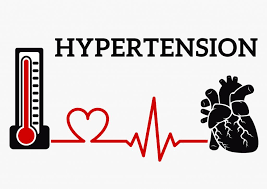

High blood pressure – or hypertension – is common in both men and women, especially as we age. However, it tends to follow different patterns over the course of men’s and women’s lifetimes.
“In general, blood pressure in children and adolescents is equivalent between males and females,” says cardiologist Dr. Paula Harvey, director of the cardiovascular research program at Women’s College Hospital.
That pattern changes after puberty and through the teenage years. Through their reproductive years, women tend to have lower blood pressure than men the same age, and lower rates of hypertension.
“When women transition through menopause things start to change,” Dr. Harvey says. “Blood pressure in women starts to increase with age at a faster rate than it does with men, so you get a steepening of that age-related increase in blood pressure. By age 75 or 80, there are more women with high blood pressure than men.”
Age-related patterns
With age, specific types of high blood pressure become more prevalent in women compared to men. Around menopause and after, women experience a disproportionate increase in systolic blood pressure (the top number in a blood pressure reading) versus diastolic pressure (the lower number). This pattern of a high systolic reading and a normal diastolic is called isolated systolic hypertension (ISH). It is associated with a stiffening of the blood vessels that women experience after menopause.
“Before menopause, we have very pliant, stretchy blood vessels,” Dr. Harvey says. “In that second half of life they start to get very stiff, and that’s reflected in this change in pattern.”
Despite the low diastolic reading, ISH is still a health concern.
“You can’t be complacent because your diastolic reading is in the normal range,” Dr. Harvey cautions. “When it’s coupled with that high systolic reading, that’s actually reflecting stiff blood vessels, and we know that is associated with increased adverse outcomes from the hypertension.”
Older women with ISH may also experience variations in their blood pressure. It may rise if they are under stress or doing certain activities, then drop down again, then increase again.
“That isolated systolic hypertension pattern is more difficult to control, and is associated with all the risks that high blood pressure is associated with,” Dr. Harvey says. “We treat high blood pressure because it leads to increased risk of cardiovascular disease such as heart attacks and strokes, heart failure, heart rhythm disturbances, kidney failure and possibly dementia.”
Reproductive factors
Superimposed on those lifetime patterns of blood pressure are factors related to reproductive changes.
“Pregnancy can be associated in some women with pregnancy-induced hypertension,” Dr. Harvey says. “The contraceptive pill, which is used by very large numbers of women, can cause increased blood pressure in a small number of individuals.”
That increase in blood pressure can happen at any time a woman is taking birth control pills. That’s why Dr. Harvey recommends that all women taking the pill have their blood pressure checked annually.
Hormone replacement therapy used by perimenopausal and menopausal women does not appear to have the same effects on blood pressure as the contraceptive pill.
Sex and gender must also be taken into account when prescribing medication for hypertension.
“Because we are treating women at different stages in their lifespan we have to be very aware of the best treatments for them,” Dr. Harvey says. For example, great care must be taken when choosing medications for women of reproductive age who are likely to become pregnant, or women who are breastfeeding. After menopause, the ISH pattern of hypertension that is common in women responds better to certain classes of medication than others.
Lifestyle
Dr. Harvey stresses that some of the most effective interventions for hypertension at any age are not pharmaceutical.
“I’m very invested in lifestyle interventions,” she says. “I spend a lot of time talking to my patients about what they can do for themselves before we even start thinking about medication. Top of the list is exercise.”
Exercise can be as effective as drug therapy. For example, the ISH pattern of high blood pressure so often seen in postmenopausal women can be reduced with exercise.
“Exercise helps keep the blood vessels stretchy and pliant, so you don’t have that progression to very stiff blood vessels associated with ISH,” Dr. Harvey explains.
What you put in your body matters, too. The DASH (Dietary Approach to Stop Hypertension) diet – which stresses fresh fruit and vegetables, whole grains, fish, low fat intake and low salt – is recommended for people with hypertension. Alcohol recommendations follow the Canadian guidelines for low-risk drinking: no more than two drinks per day for women, and no more than 10 drinks per week in total.
The risks of smoking – including premature cardiovascular disease and death – cannot be overstated.
Other lifestyle factors associated with hypertension include obesity, life stress, and poor quality sleep. Addressing all of these factors can have a powerful effect on blood pressure, and on overall heart health.





MD - Allopathy, Addiction Psychiatrist Adolescent And Child Psychiatrist, 10 yrs, Pune

